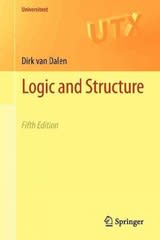
Question Question 5.6 in textbook. A 90% confidence interval for a population mean is (65,77). The population distribution approximately normal and the population standard deviation is unknown. This confidence interval is based on a simple random sample of 25 observations. Calculate the sample mean, the margin of error, and the sample standard deviation. Question 2 Coaching companies claim that their courses can raise the SAT scores of high school students. Of course, students who take the SAT without paying for coaching generally raise their scores, too. A random sample of students who took the SAT twice found 427 who were coached and 2733 who were uncoached. Starting with their Verbal scores on the first and second tries, we have compiled the summary statistics in the table below. Try Try 2 Gain (Try 2- Try 1) n Coached 127 500 92 529 97 29 59 Uncoached 2733 506 101 527 TOT 21 52 (a) (7 points) Is there good evidence that coached students s gained more on the average than uncoached students? (b) (7 points) Is there good evidence that there was a difference in scores on the first try for the coached and uncoached students? Question 3 A trucking company would like to compare two different routes for efficiency. Truckers are randomly assigned to two different routes. Twenty truckers following Route A report an average of 40 minutes, with a standard deviation of 3 minutes. Twenty truckers following Route B report an average of 43 minutes, with a standard deviation of 2 minutes. (a) (7 points) Find a 95% confidence interval for the difference in average time for the two routes. (b) (7 points) Will the company save time by always driving one of the routes? Question Fancy pets are big business, so a young entrepreneur (age 12) decided to breed golden hamsters, a type well known to pet stores and collectors. (Oddly enough, nearly all golden hamsters in captivity are descendents of one litter found in Syria in 1930.) Of 47 recent litters, there were an average of 7.27 baby hamsters with a standard deviation of 2.5 hamsters per litter. (a) (7 points) Find and interpret a 90% confidence interval for the mean litter size. (b) (7 points) Teddy hamsters have an average of 5 baby hamsters per litter, is there evidence that golden hamsters have significantly larger litters than teddy hamsters? Use an a-level of 0.01








